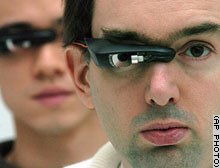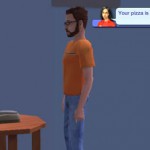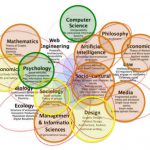Steve Mann, inventor of wearable computing, came to the Ecole Polytechnique Federale de Lausanne in the 1990s when I was PhD student there. He had some difficulty getting on the metro as his head-mounted aerial added several inches to his height.
Watching him struggle to get through the door, I was inspired and excited by a researcher who wore and lived his work. Related MIT websites, where Mann was based, showed me how I could augment my reality by turning a gameboy into a wearable computer. The instructions came with a warning that it would affect my vision, though I would soon adapt to the constant red line. After all, the wearable was a lot smaller than Mann’s.
Today Mann’s wearables are very nifty indeed. Unfortunately, they didn’t escape Canadian airport security officials who unplugged him in Newfoundland and left him unable to function properly. Twenty years of living in an augmented world and having streaming information which assists his memory and enriches his world view cannot be switched off without causing damage.
Are we losing more than we gain?
More and more, it seems that humans cannot move forward with technology without there being a loss. As Mann demonstrated at the airport, augmented humans or cyborgs, can no longer function after being dependent on technology for so long.
Ubiquitious computing, where computers are off the desktop and embedded into our infrastructure so that we interact with them without our knowledge, offers the same results. Yes, it is all sexy to have your phone talking to your keys to remind you where you have left them; or, to have your thermal coffee cup reheat your coffee when it senses that it is cooling; or, to have the lights switch on and play mood-setting music when you enter a room. When it works, it is all very sexy indeed.
Tagged and bound
When things break down, we all grind to halt. You can’t find your keys, your coffee is cold, there are no lights or music in the house, because you have gotten out of the habit of doing these simple tasks. And now you can’t do them without debugging what went wrong. You are useless without your computer yet you are dependent on technology.
And that is an innocuous example application. In the ubiquitious world you are tagged and monitored by the smart badges, invented at Xerox PARC so that others can see how long your toilet break takes, who you are chatting to, and where you are in the building. You are trapped in a more sinister way.
Is this what we want from our technological advances? I’m only asking because it is often what we get. The alternative to controlling invasive applications is to train your users to become absolute system ninjas. But does technology make your ninjas’ lives easier if they have to go on intensive learning curves?
Augmenting reality for good
Augmented Reality (AR) researcher Ronald Azuma introduced such a system with his ultrasound-guided biopsy of breasts. This was an AR application with which I was so impressed that I always use it as an example of technology for good during my human-computer interaction lectures, even if saying breast to a group of 18-year old computer scientists is going to make them titter for the rest of the lecture course.
Azuma says himself that ultrasound-guided biopsy is difficult to learn and perform and needs good hand-eye coordination and three-dimensional (3D) visualization skills to guide the biopsy needle to the target tissue area with the aid of ultrasound imagery. Ultrasound pictures can be difficult to interpret, ask any mum-to-be about the scary information she gets from scans during hospital visits.
Lots more research is needed to augment our worlds usefully, which is why a stand-alone virtual world can sometimes be more attractive.
Virtual Reality
Interpretation isn’t a problem in the virtual world, regardless of whether the computer-simulated environment is real or imagined. Users can normally understand what it going on because virtual reality (VR) simulates the real world. Users learn how to fly aeroplanes or perform medical operations in simulators. The main drawback is that high-fidelity experiences are difficult to create because of processing power, image resolution and communication bandwidth limitations.
The other main problem is interacting with a 3D world. Most VR applications are so specialised, there are no standard interaction techniques. Many ways of interaction have been introduced to give the impression of real world feedback. Datagloves, or wire gloves, react to user hand movements to give the impression of resistance when a user comes into contact with artefacts in the virtual world. The user wears a head-mounted display to see only the virtual world. It is a far cry from the desktop and keyboard and mouse.
VR equipment, like its AR counterpart, is difficult to use, and can leave the user with headaches and other symptoms as the user adapts back to the real world. It is also very expensive which is why it remains in specific domains such as the military. Everyone else uses the cheap and cheerful version: the desktop virtual world.
Desktop virtual worlds: combining old and new
Second Life is one example of a desktop virtual world. It sidesteps interaction problems by keeping the desktop, keyboard and mouse and using old familiars such as instant messaging as a way of communicating. Users don’t have to learn lots of new interaction techniques, they can concentrate on learning the world they are in. Admittedly because it is run over the Internet, it can be clunky and slow. Still, it works well enough for users to create transport systems, IBM training seminars, or psychology courses which demonstrate how real hallucinations can be.
Learning and training takes place in Second Life in a cheap and uninvasive manner without interfering with your users’ brains and leaving them with headaches, or worse still, unable to function in the real world without technological support. Desktop virtual worlds let users choose whether they want to be ninja users or just observers. This leads to more satisfactory user experiences and better interactions. We can lead users gently into different technologies and allow them to feel that they have some control over their interactions and experiences so that they want to use them again.
Remembering what we have learnt
Technology is advancing constantly. And virtual and augmented world applications have the potential to improve our lives in so many ways. But we must learn to apply them usefully and to retain the knowledge we have learnt along the way so that we are enriched by applications, not damaged by them.





